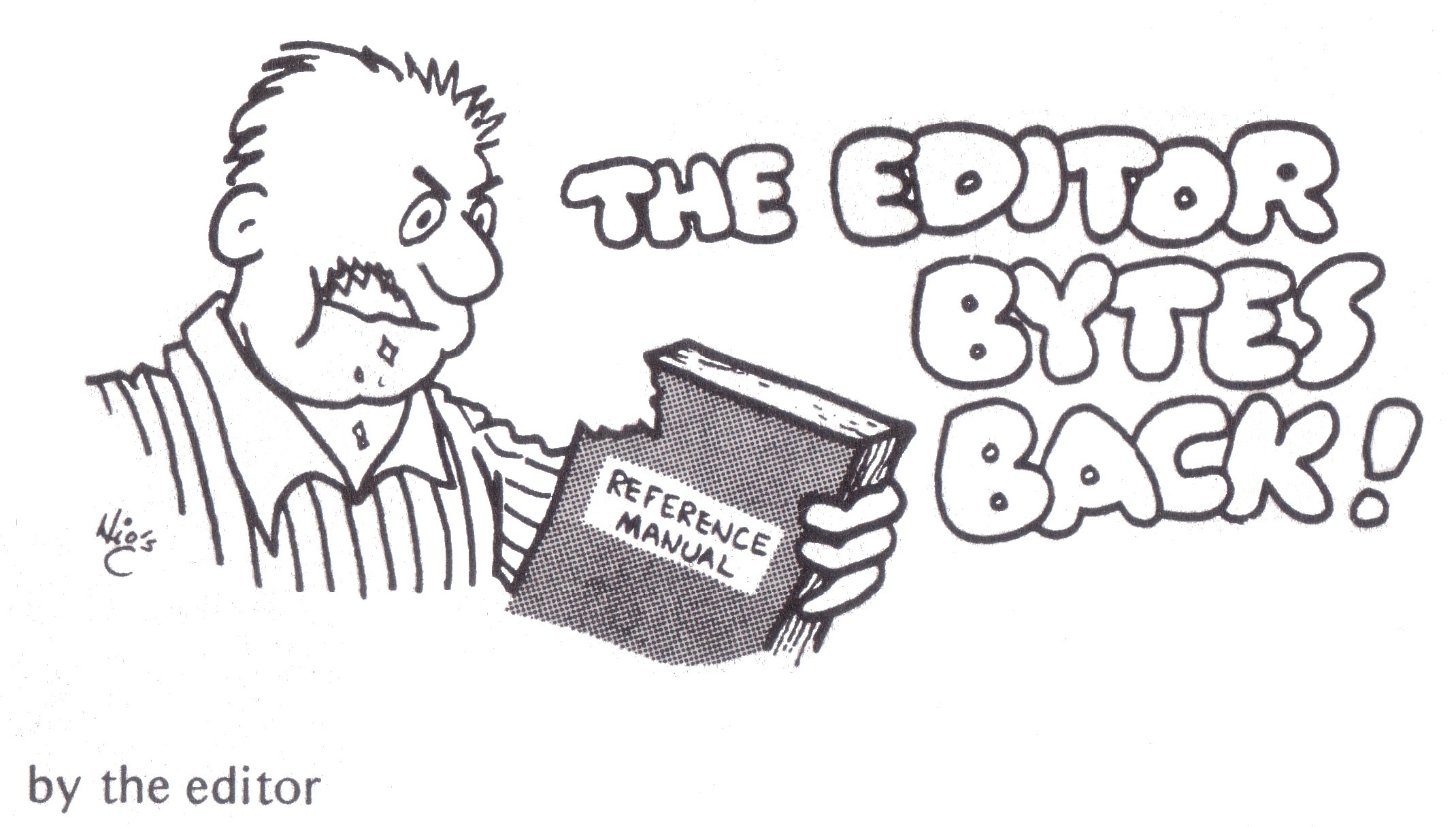Tag: Call-A.P.P.L.E. Magazine
Press Release 9 July 2002 – Seattle, Wa – The August issue of Call-A.P.P.L.E. Magazine will carry a 5 page interview with Bill Fernandez, also known around the world as Apple Computer, Inc. employee number 1. Call-A.P.P.L.E. Magazine is the monthly magazine produced by Apple PugetSound Program Library Exchange (A.P.P.L.E.) and carries information for all of the Apple computers. Bill Fernandez developed much of the software, which was available for the early Macintosh computers as well as the Lisa….
Press Release 10 April 2002 Jef Raskin Interview in June 2002 Issue of the New Call-A.P.P.L.E. Magazine Seattle—Apple PugetSound Program Library Exchange (A.P.P.L.E.) released it’s second issue of Call-A.P.P.L.E. magazine since its return in March 2002. The latest issue of the magazine includes an exclusive interview with the father of the Macintosh, Jef Raskin. Jef speaks candidly in this interview about his days at Apple Computer, Inc. and his relationship with Steve Jobs during the years he was developing…
The First Edition of Call-A.P.P.L.E. Magazine. (Reproduction) Apple Puget Sound Program Library Exchange C/O Val J. Golding 6708 39th Ave. S.W. Seattle, Wa. 98136 (206) 937-6588 (Home) (206) 623-7966 (Work) February 7, 1978 Dear Apple Owner: The purpose of this letter is to form an Apple computer users group, as indicated by the tentative name above, and to further the exchange of information and programs of interest to Apple Users. A preliminary meeting has been set for 7pm Thursday, February…
Press Release Date: 20 March 2002 News: A.P.P.L.E. to publish Call –A.P.P.L.E. magazine again. The premier Apple computing magazine available once again. Seattle, Wa. – 20 March 2002 — Apple PugetSound Program Library Exchange (A.P.P.L.E.), one of the worlds largest user groups will be releasing the first issue of Volume 14 of it’s magazine Call-A.P.P.L.E.. This will be the first issue of the magazine after a twelve-year hiatus. The last issue released by A.P.P.L.E. was Volume 13, Number…
This article describes a program which lets you easily install customizing routines, such as a RAMdisk and clock card drivers, on bootup into ProDOS, It mimics, under ProDOS 8, the SYSTEM.SETUP feature of ProDOS 16. It is emphatically placed in the public domain: I urge software publishers to take it and include it where appropriate with their own programs. I only ask that you take the program unmodified. It would be unfortunate if variants of the program spread around, each…
How many of you remember Little Brickout? If you do, you may be dating yourself, because it goes back almost ten years. A Lo-Res [gasp] graphics game played with the game paddles, Brickout’s simple object was to knock bricks out of a wall with a bouncing ball. How far things have come since then! Once upon a time, personal computers were thought of as little more than sophisticated toys, good only for playing games. Little did we know or foresee,…
Murray Arnow/Call -A.P.P.L.E. staff writerJune 1983 / PP 49-52 Apple CP/M is probably the least documented of the operating systems available to Apple users. With this in mind, I hope to share some of the information I have been able to gather on the 2-80 Soft Card and the associated Microsoft implementation of CP/M. Before I begin, let me urge the reader to refer to the series of articles by Gregg Tibbetts in Softalk magazine titled SoftCard Symposium. The latter…
by Val J. Golding Call-A.P.P.L.E. Magazine March 1983 PP81 CP/MUFFIN was a rush job. We had a story submitted to us on Wordstar on a CP/M formatted diskette. Fortunately for us, we had just published a story in the December Call -A.P.PL.E. by Art Messler, which pretty well explained the structure of a CP/M directory. As it turned out, the clues in that story were sufficient to start us on the right path. We were working in the dark, not…
A new year is upon us, another 12 issues of Call-A.P.P.L.E. We would like to request again our readers Input. What are your preferences and dislikes. Take time, if the thought appeals to you, to photocopy the contents page and rate the stories. We’re interested also in how you use your Apple, whether or not you write your own programs or plan to. Comments should be addressed to the Editorial Office at the address shown on page 2, and should…
A Call-A.P.P.L.E. Techniqueby Mat DavisCall-A.P.P.L.E. Magazine October 1982 PP17 One of the Apple’s strongest points is its ability to use multiple operating systems such as DOS 3.3 and Pascal. For someone who uses both of these operating systems, there are times when it would be convenient to have disks that both Pascal and DOS could use. Such a disk would be useful for individual users who are trading programs or for user groups who want to have some Pascal programs…
By Thomas G. WilliamsCall -A.P.P.LE. July 1982 PP79 THE Symbol Symon symbolic debugger is a major improvement over the capability included in the Apple ][ monitor. Unfortunately, it does not know about the Big Mac.LC assembler and thus can not save or use the symbol table produced by Big Mac.LC. Symbol Symon can be used without a symbol table, but you lose the capability to refer to locations by name instead of address. Fortunately, the Big Mac.LC symbol table is…
by Ted Perry Call-A.P.P.L.E. MagazineJanuary 1980 V03N01 PP35-36 This is a progress report on the project reported upon in the July/August issue of CALL-A.P.P.L,E. As you probably recall from the original article, the Kyde Tyme Project and the CHIP Project arc computer assisted instruction grants funded by Title IV-C to develop computer assisted instruction on the Apple Microcomputer. Our tasks arc to develop a CAI author Language for the microcomputer; add graphics to the format that in the past used…
by Ted Perry Call-A.P.P.L.E. MagazineJuly / August 1979 When I was asked to help put together a CAI (Computer Assisted Instruction) subgroup, I naively said I would. The demands of correspondence quickly overran my capabilities to respond and the initial influx of programs overran my ability to document. Now with the help of a group of dedicated computer aficionados, the correspondence is under control and the documentation is in process. In this first article I would like to describe the…
The BIG NEWS for this issue is APPLESOFT WORKSHOP is here! The cost is S6.41 postpaid, and orders will be accepted, subject to the following conditions: This preliminary version will be updated several times over the next few months. Updates will be available at $2.00 postpaid. This version is disk-dependent in that it requires disk for certain routines, including Append. Every attempt has been made to debug it, but some may still remain. Please allow 30 days for delivery on…
Much of this issue of Call-A.P.P.L.E. was done 0n our own Apple II Computer, nobly assisted by an Integral Data IP-225 printer, along with our own modification of Phil Roybal’s Lower Case Character Generating Program (See Contact, May, 1978) The IP-225 has performed beautifully, and because you can software-select eight different type fonts, It is ideal for this task. We believe the smallest available type face, which we are using here, is easily readable, and it contributes further by making…
Currently, only the July issue is available. We plan to reprint April, May and June as time and money permit. If you have not received the back issue you want, please send a self-addressed envelope and 41 ¢ postage, along with the issues you desire. We will fill the orders, but it may take quite some time.
Coming up in the July issue of Call-A.P.P.L.E. Magazine: Annotated Memory Test by Bob Huelsdonk Using Color Mask in HIRES by Darryl Aldrich Mystery Program — A Contest by Val Golding Programming Hints from Apple to Z Integer Basic Floating Point by Don Williams Reviews, New Product Announcements, Etc.
A collection of tidbits worth nothing What is a color monitor worth to you? One of our number has access to same and will consider all serious offers… If you want 16K chips, tell us. We would have to buy a large quantity, true, but we have to know how many we can handle before we approach a manufacturer. We feel we could do something for under $250. Speak now or forever hold your chips. We have to get moving…
This month, we have a number of brief programming aids. For starters, here is how you can break your long PRINT statements in pages:For more than two pages, use this subroutine, inserting the GOSUB after 20 or less lines: 200 VTAB 22:PRINT “HIT RETURN FOR NEW PAGE”: CALL -676: CALL 936: RETURN. This will halt the program with a bell, and wait for a Return to resume. To correct a line in a program listing, POKE __, 33 before listing….






















